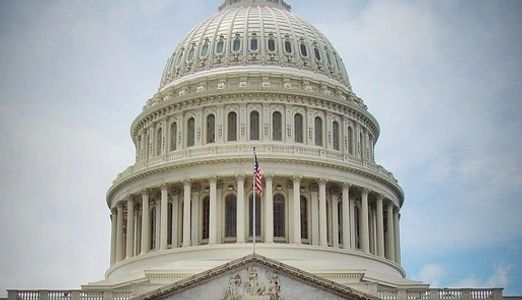Hoecker Energy Law & Policy - WIRES - Rail Electrification Council - Husch Blackwell
LATEST COMMENTARY
U.S. Railroading: What Sector's Future Power Suppliers Will Need to Know
This commentary was first published by POWER Magazine, Jan. 9, 2025. It bookends another piece that also promotes collaboration between rail and the electric power industry, two critical US infrastructure networks. See “The Electric Power Business Today: Basics for Railroaders” (Rail Age, July 27, 2023). The Rail Age commentary highlights the decentralization of many functions of the electric system, the ongoing revolution in the electric generation mix driven by the advent of competitively-priced renewable energy, natural gas generation, and decarbonization trends, the deep concerns about the age and condition of the grid, its antiquated design, and limited delivery capabilities in the face of massive growth in electricity demand, extreme weather, and other threats to reliable service. The tiered regulation of electric grid planning and permitting under the federal system has often frustrated efficient solutions—nowhere more than in siting interstate transmission and generation interconnection.
READ MORE:
https://www.powermag.com/u-s-railroading-what-sectors-future-power-suppliers-will-need-to-know/

ALSO READ

- Macro Grid Initiative Launches to Expand and Upgrade America’s Transmission Network (June 2020)
- White Paper: The Value of Rail Electrification (April 2020)
- "Transmission Development" [Interview], Public Utilities Fortnightly (December 2019)
- "Happy Birthday and Thank You, O2K (Order 2000)!" Utility Dive (December 2019)
- FERC Chairs Since 1993 Mark the 20th Anniversary of FERC Order No. 2000, Americans for Clean Energy Grid (December 2019)
RAIL ELECTRIFICATION

Rail Electrification Coalition (REC)
The REC is established to promote the adoption of electricity as the principal motive power of domestic railroad (freight and/or passengers) transportation and as an enabler of electric grid integration and innovation. The REC will embark on this mission through support for constructive public policies and regulation, development of helpful standards and best practices, effective communications and education, and innovative commercial product development that benefits NEMA member companies, non-NEMA REC members, and the public’s interest in robust energy and transportation infrastructures.
Documents available for download:
Rail Electrification Council (REC) - 2020 Strategic Planning Document
What REC Offers and Why Now (MS-Word)
Also Noteworthy

2021 State Rail Plan: Nevada Department of Transportation - Section on RAIL ELECTRIFICATION
Section on RAIL ELECTRIFICATION written by James Hoecker on Behalf of the Rail Electrification Council.
In the news: Transmission Troubles? A Solution Could Be Lying Along Rail Lines and Next Generation H
Multiple studies show the need for interregional transmission is growing and proposals for streamlining siting will help, but cost allocation remains a barrier
Challenge to Proposed Repeal of EPA Clean Power Plan By Former FERC Regulators
The Trump Administration proposed to repeal EPA’s Clean Power Plan, which was adopted in 2015. The CPP required state regulators to order reductions in greenhouse gas and other emissions from coal-fired power plants. The repeal was based on (1) a potential threat to electric reliability from loss of baseload generation and (2) EPA’s alleged encroachment on FERC authority under the Federal Power Act. As one of the “friends of the court” in American Lung Association v. U.S. Environmental Protection Agency (Case 19-1140, U.S. Court of Appeals for the District of Columbia Circuit – attached), former FERC Chairman Hoecker and other former regulators argued on brief in April that the CPP was a valid exercise of EPA authority and does not affect either FERC’s regulatory authority or electric reliability. The case has not yet been argued.
Webinar: ACEG and FERC Chairs Mark the 20th anniversary of FERC Order No. 2000
On December 19, 1999, the Federal Energy Regulatory Commission enacted Order No. 2000, which encouraged the formation of Regional Transmission Organizations, under the leadership of then Chairman James Hoecker. In a December Op-Ed in Utility Dive, former Chair Hoecker, an ACEG Director, said that, “Order No. 2000, or ‘O2K,’ has long since exceeded our modest expectations in producing economic, reliability, and (I maintain) environmental benefits for electricity consumers.”
Professional Background
Legal Counsel & Advisor
Federal Energy Regulatory (FERC) Leadership
Federal Energy Regulatory (FERC) Leadership
Practitioner of energy law since 1979
- Senior Counsel & Energy Strategist, Husch Blackwell LLP (2008 - )
- Principal, Hoecker Energy Law and Policy PLLC, (2005 - )
- Formerly Partner at Jones Day and Vinson & Elkins
Federal Energy Regulatory (FERC) Leadership
Federal Energy Regulatory (FERC) Leadership
Federal Energy Regulatory (FERC) Leadership
- Chairman (1997-2001)
- Commissioner (1993-1997)
- Assistant General Counsel (1984-1988)
Boards of Directors
Federal Energy Regulatory (FERC) Leadership
Boards of Directors
- Lead Director, Allegheny Energy ( 2002-2003)
- Northland College (WI), (1989-2004)
- Graywolf Press, (2010-2017)
- Americans For A Clean Energy Grid, (2015- present)
- Energy Systems Integration Group (2019 – present)
WIRES, LLC
Biographical
Boards of Directors
The major international non-profit trade association in the electric transmission space.
- Founder, Counsel, and Executive Director (2005-2020)
Biographical
Biographical
Biographical
Personal
Mr. Hoecker has published and spoken widely. A native of Wisconsin, Mr. Hoecker has lived in Virginia for 40 years. He received his B.A. from Northland College, Ashland, Wisconsin, in 1967; a M.A. and Ph.D. from the University of Kentucky, in 1970 and 1975 respectively; and his Juris Doctor from the University of Wisconsin Law School in 1978. Mr. Hoecker also taught history at the University of Kentucky and Adrian College before entering the legal profession. He is married to Rebecca Evans Hoecker. They have two grown children and four grandchildren.
Focal points

Energy Law & Policy
- Regulatory and legislative affairs representation
- Regulatory risk assessment
- Organization management
- Railroad electrification
- Administrative litigation and compliance
- Administrative rulemaking and policy formation
- Congressional and expert testimony
- NEPA and environmental analysis
- Strategic planning advice
- Innovation
The Electrified Economy
Video exploring the interconnections between our economy and the electron super-highway.
